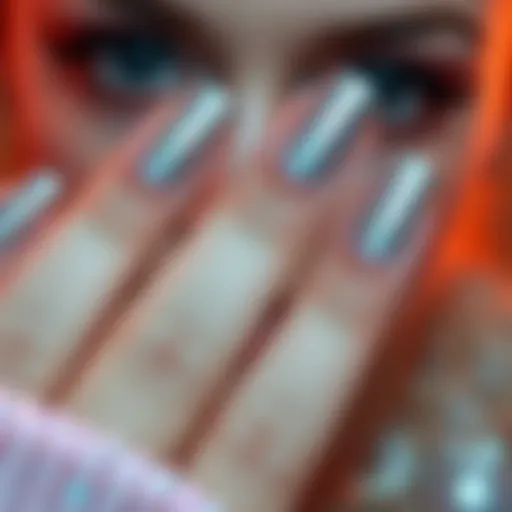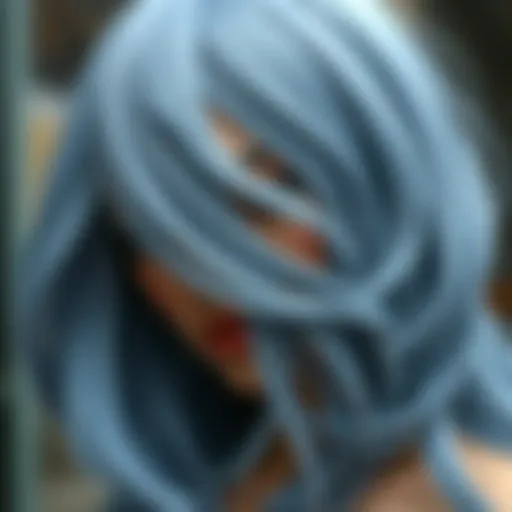The Allure of Lace: Exploring Sexy Lace Fashion
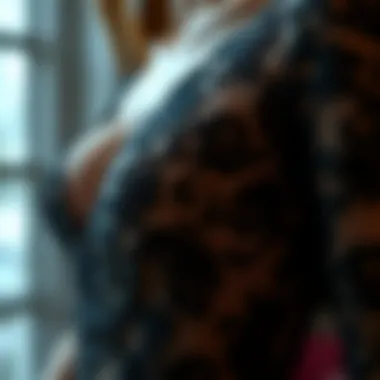
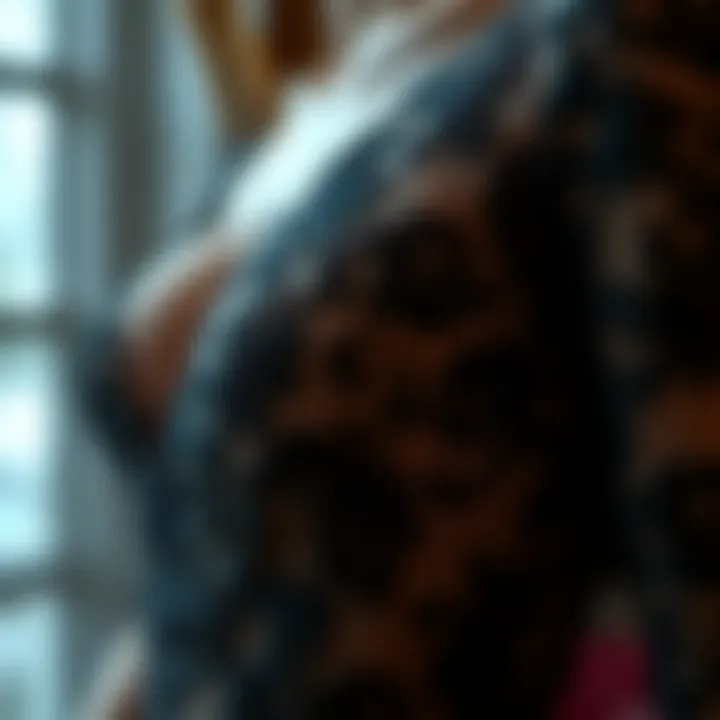
Intro
Lace has always been more than just a fabric; it carries a certain allure that not only enhances garments but also embodies a historical narrative steeped in elegance and femininity. Originating as a luxury item in the 15th century, lace has evolved far beyond its aristocratic roots to become a staple in trendy wardrobes today. Seen draped over dresses, incorporated into lingerie, or fashioned into intricate blouses, this delicate material remains a favorite for designers who strive to balance sensuality and sophistication in their creations.
While fashion trends often flutter like autumn leaves, lace has proven its staying power, continually reinventing itself in contemporary styles. With a particular resurgence in recent years, it has captured the interest of fashion enthusiasts looking to add a touch of romance and drama to their outfits. As we venture deeper into the world of lace, this article will explore not just its historical significance, but also the current trends, maintenance strategies, and styling tips that elevate it from mere fabric to a fashion statement. Lace’s ability to envelop the body in sheer beauty makes it a go-to fabric for designers aiming to invoke both allure and elegance.
In the following sections, we will uncover the nuances of how lace shapes the modern landscape of sexy fashion, providing insights geared towards designers, stylists, and anyone keen on showcasing lace in their daily wear.
The Historical Significance of Lace
Lace is not merely a fabric; it is a reflection of taste, social standing, and even cultural evolution throughout history. The historical significance of lace in fashion gives insight into how this delicate material has woven itself into the very fabric of society. Understanding its origins and developments can deepen our appreciation for its presence in modern sexy fashion. Lace has ushered in a sense of elegance that transcends time, making it a relevant choice for designers and consumers alike.
Origins of Lace in Fashion
Lace traces its roots back to the late Middle Ages, where it was initially a craft of needleworkers. The first types of lace were often made with simple threads left behind from weaving processes. Over time, it evolved into intricate designs reflecting the artistry and technical skills of the makers. In that era, lace showcased not only decorative flair but also indicated wealth and social class. It was often reserved for the upper echelons of society as a symbol of affluence. These origins laid the groundwork for how lace would later be perceived in the context of sexy fashion, redefining notions of femininity and allure.
Lace Through the Ages
Baroque Era Influences
During the Baroque era, 1600s to 1750s, lace experienced a remarkable transformation. Characterized by lavishness and extravagant designs, lace became more than just a functional material. It was embellished with opulent motifs, elaborate forms, and a complexity that echoed the art and architecture of the time. The heavy use of lace in the wardrobes of nobility magnified its appeal, making it a popular choice for high-fashion garments that accentuated the curves and silhouette of the body. The bold patterns and dense textures of Baroque lace rendered it a beneficial choice for designers looking to craft statement pieces that exude personality and extravagance. Its distinct lack of subtlety often sparked conversations surrounding opulence and desirability.
A fashionable suit with lace ruffles or an embroidered lace trim was a siren’s call of elegance, drawing the eyes to the wearer and capturing the essence of the era’s indulgence.
However, this influence also presented certain dilemmas. The weight and bulkiness of the lace could be cumbersome, often detracting from ease of wear. Nonetheless, the aesthetic appeal and glamorous visual it lent to garments made Baroque lace an advantageous choice that still reverberates in sexy fashion today.
Victorian Era Sensuality
Fast forward to the Victorian era, from the mid-19th century to around the turn of the 20th century, where lace found renewed vigor and became synonymous with seduction and femininity. Lace was now seen not merely as a decorative appendage but a statement of elegance and sensuality. The fabric was used extensively in various garments like blouses, petticoats, and evening dresses, often highlighted in strategic areas to accentuate the figure. The use of lace in corsetry became particularly notable, framing an idealized silhouette that many women aspired to achieve.
The transparent nature of lace contributed to its allure, blurring the lines between modesty and seduction. It became a popular choice for intimate evening wear; subtly alluring yet dignified. The intricate lace patterns added layers of mysterious beauty, making them showcases of one's figure without being overtly revealing. This intricate balance of sensuality and refinement helped lace carve its niche as a dominant force in the world of intimate apparel.
However, the constraints of Victorian societal norms also imposed limitations. While lace was celebrated for its beauty, it was often paired with constricting undergarments, which complicated ease of movement. Yet, the allure it provided was undeniable; the tension between restriction and femininity became a defining characteristic of Victorian lace fashion, exemplifying how fashion always utilizes history to inform contemporary trends.
Understanding the historical significance of lace provides crucial context for its enduring popularity in modern settings. As designers and consumers navigate the world of lace, they build upon centuries of artistry and expression, weaving a rich tapestry of culture and significance into today’s sexy lace fashion.
Understanding Different Types of Lace
When it comes to lace, there’s a world of difference in the types and styles available, and understanding these variations can be crucial for anyone looking to incorporate lace into their wardrobe. Lace's rich texture and intricate patterns add depth to fashion. Depending on the fabric type, it can convey elegance or playfulness, making it a versatile element in clothing. Familiarizing oneself with the different lace types ensures better decision-making when styling and selecting pieces. Here’s a deeper look into the specific types of lace fabrics.
Types of Lace Fabrics
Chantilly Lace
Chantilly Lace carries a distinctive charm that is immediately recognizable. Originating from the Chantilly region of France, this lace is known for its delicate floral patterns framed with intricate scalloped edges. It often features a fine netted base that creates gentle, airy looks. Its lightness makes it a favorable choice for evening wear or romantic settings and is often used in overlay details on dresses.
One of the unique features of Chantilly Lace is its versatility; while it can be left sheer for a see-through effect, it can also be layered for a more substantial look. However, one must handle it with care, as it tends to fray more easily than sturdier lace types. Producing pieces with Chantilly Lace can yield exquisite results, but it does come with the consideration of needing careful storage and maintenance to preserve its light, floaty quality.
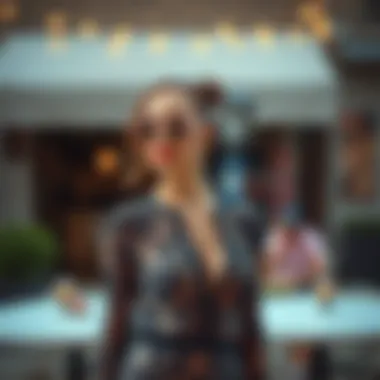
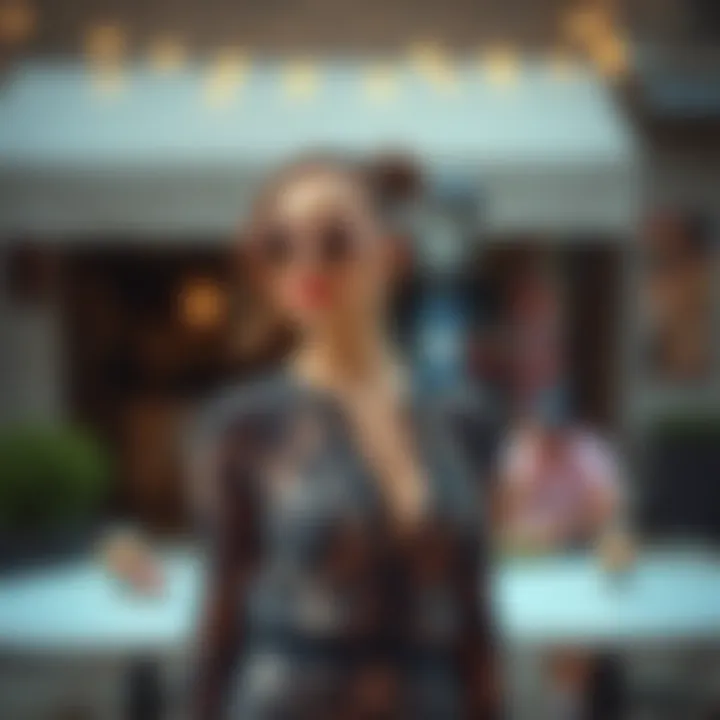
Alençon Lace
Next comes Alençon Lace, often dubbed as the "Queen of Lace" due to its richly designed patterns and historical significance. Similar to Chantilly, but heavier and with a more structured design, Alençon lace is typically characterized by its floral motifs set against a fine net background, embellished with embroidery. This lace is of a sturdier nature, granting it durability without compromising beauty, making it a popular choice for wedding gowns.
The key characteristic of Alençon Lace is how it can seamlessly blend with other fabrics — adding dimension yet retaining elegance. The lace's advantage lies in its robust build, which doesn’t easily break down, even under heavy use. However, its weight may limit its applications in lighter garments, making it more suited for formal occasion wear.
Venise Lace
Venise Lace, or Venetian Lace, is another fascinating type that differentiates itself with its heavy, embroidered designs, often sturdier than other lace types. This lace typically features bold, raised motifs that come across as striking rather than delicate, often used in bridal wear or accenting evening outfits. The unique feature of Venise Lace is its lack of a netted base, giving it a textile-like fullness while retaining an intricate pattern.
This style stands out for its dramatic effects in design. It is an excellent choice for those seeking boldness in their outfits while still wishing to maintain a hint of feminine flair. While it’s less suited for sheer applications, rustic or vintage styles may benefit greatly from its rich texture and detailing.
Characteristics of Sexy Lace
Transparency and Sheerness
The allure of sexy lace fundamentally comes from its capacity for transparency and sheerness. Lighter fabrics often inspire a captivating sensuality as the subtle exposure reveals more than it conceals. This characteristic allows the wearer to express confidence and allure while feeling comfortable.
What makes transparency appealing is its ability to lend a sense of mystery. When layered strategically, sheer lace can highlight curves while ultimately preserving modesty. However, one must be cautious; overdoing the sheer elements can tip the balance from elegant to overwhelming.
Patterns and Textures
When it comes to characteristics, patterns and textures are what truly breathe life into lace. Diverse designs range from floral to geometric, allowing for various interpretations of elegance or whimsy. These patterns can tell stories and evoke emotions, bringing more than just aesthetic value to an outfit.
The unique factor here is how different patterns can flatter certain body types or even set the mood for an event. A bold floral can elicit a playful aura, while intricate scallops might exude refined sophistication. Careful selection of patterns is paramount as it can dramatically reshape one’s look. However, it’s wise to avoid mixing too many prints or textures, which can lead to a clash rather than a cohesive statement.
Lace is not just a fabric; it's a canvas—a beautiful interplay of texture, design, and personal expression.
The Appeal of Lace in Contemporary Fashion
Lace has clawed its way back to the forefront of contemporary fashion, and the reasons are as numerous as the patterns that grace this timeless fabric. Its unique combination of delicacy and versatility makes it a staple in any fashionable wardrobe. In an age where personal expression reigns supreme, lace offers a canvas for both sensuality and sophistication; it can be playful yet elegant, a true chameleon of a fabric.
Within this section, we’ll explore how lace transforms everyday wear, elevates evening attire, and serves as a symbol of femininity and strength. With so many styles to choose from, it’s clear that lace presents a grand stage for creativity and self-expression.
Lace in Everyday Wear
Lace Tops and Blouses
When it comes to everyday wear, lace tops and blouses stand out as essential pieces. Their unique aspect lies in their ability to blend casual comfort with an air of elegance. Often designed with a bit of transparency, a lace top isn't just a shirt—it's a statement.
Key characteristics, such as their versatility, allow lace tops to pair flawlessly with jeans for a laid-back look, or they can be dressed up with tailored trousers for office environments. It’s this flexibility that has made lace tops a beloved choice in contemporary fashion.
Some might argue about the practicalities, such as the need for careful washing, yet the advantages often outweigh any minor drawbacks. Lace tops offer a unique feature in that they showcase craftsmanship, transforming something ordinary into a piece of art. Add a lace blouse to your wardrobe, and suddenly, there’s a touch of sophistication that catches the eye.
Lace Dresses
Lace dresses bring a whole new dimension to everyday wear, encapsulating femininity while also providing a dash of edge. The specific aspect of lace dresses is that they range from casual styles suitable for brunch to elegant designs fit for weddings. Depending on their cut and the lace's thickness, the impact can vary drastically.
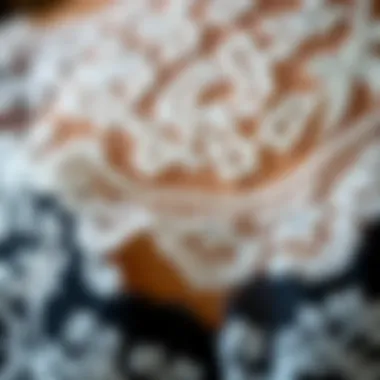
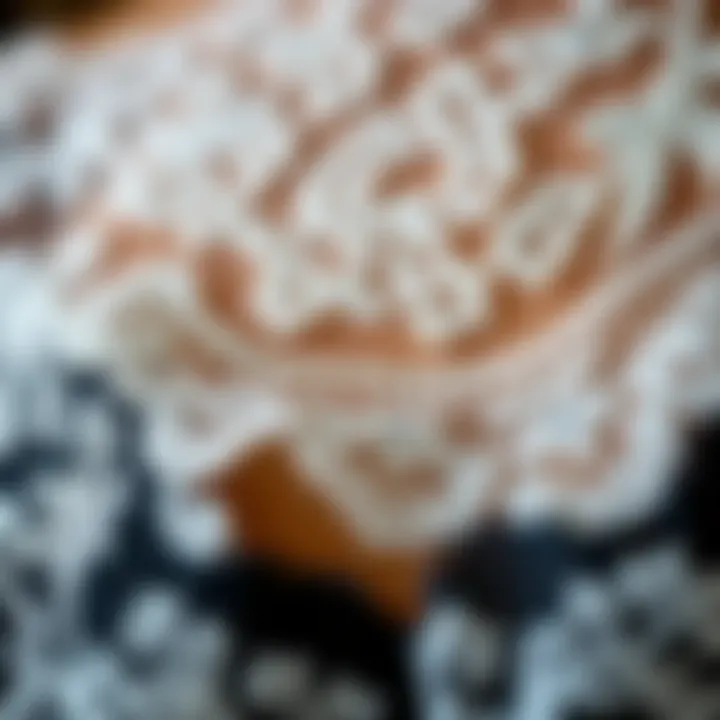
One reason lace dresses have become popular is their ability to enhance body contours beautifully. The lace overlay adds texture, making it a winning choice for those who want to flatter their shape while maintaining an air of allure. One unique feature worth mentioning is the availability of sheer panels, providing a perfect blend between seductiveness and decorum.
Caveat: depending on the design, certain lace dresses might require careful handling. However, their striking appearance often makes them worth the effort needed in maintenance.
The Role of Lace in Evening Wear
Elegance in Formal Attire
When it comes to formal events, lace effortlessly exudes elegance. The specific aspect of lace’s contribution to formal wear lies in its capacity to elevate outfits to a level of sophistication. Take, for example, a long lace gown adorned with beading and intricate patterns; it commands attention while maintaining an air of refined grace.
The key characteristic that defines elegance in this context is the balance lace strikes between demureness and sensuality. It flows with the body while allowing the skin to peek through, creating an enchanting allure. This makes lace dresses or overlays a favored choice for formal functions.
One might note the disadvantage of lace being less forgiving than other fabrics; it can snag easily. However, this fragility adds to the allure; after all, delicate things often draw admiration and respect.
Statement Pieces
Lace is not just about subtlety; it can also serve as a bold statement. The concept of statement pieces in lace is fascinating; these garments can take the form of a striking lace jacket or an intricately designed skirt.
One of the key characteristics of statement pieces in lace is their ability to stand alone. They don’t require much accompaniment to shine. One unique feature of these pieces is the dramatic flair they inherently provide. Wearing a lace statement piece communicates confidence; it shows an understanding of fashion more profound than surface-level choices.
However, a cautionary point to consider is that they can sometimes overshadow other elements of an outfit. Wearing a loud lace piece means that careful consideration of the remaining components is crucial, maintaining a balanced yet striking overall vibe.
Lace constructs a dialogue between sweetness and strength—a true embodiment of the modern woman’s journey in fashion.
By weaving lace into contemporary wardrobes, designers, and style influencers create a tapestry that celebrates not only beauty and allure but also resilience and innovation in fashion. The multifaceted nature of lace continues to inspire a new generation, playing a key role in bridging tradition and modernism.
Styling Techniques for Lace
Styling lace is not just about throwing on a dress and calling it a day. It’s an art form that intertwines various elements of garment construction, texture combination, and accessorizing to bring out the inherent elegance of lace. This section sheds light on essential styling techniques that blend lace seamlessly into various outfits, elevating their sophistication while embracing allure. These techniques are vital for anyone looking to make lace a staple in modern fashion.
Layering with Lace
Layering with lace fosters depth and complexity in any outfit, offering visual interest while allowing for adaptability in different settings. By thoughtfully choosing complementary pieces, lace can transition from casual to formal with ease.
Combining Textures
Combining textures is like painting on a blank canvas. When you marry lace with different fabrics, such as denim or leather, you create a striking contrast that is visually captivating. For instance, a delicate lace blouse paired with a sturdy leather jacket screams chic without trying too hard. The key characteristic of this approach is the unexpected pairing, which draws the eye and creates a conversation starter.
One of the unique features of this technique is its versatility. It can suit almost any occasion, from casual outings to formal gatherings, depending on the chosen fabrics. However, one possible disadvantage is if the colors clash or the textures conflict, the intended elegance of the lace can quickly fade. Thus, careful selection is imperative to achieve the desired flair.
Balancing Bold Pieces
Balancing bold pieces can be a delicate dance when styling lace. The idea here is to use lace as a soft, romantic anchor amidst stronger, more striking garments. Imagine a vibrant printed skirt topped with a simple lace bodice; this creates a balanced silhouette that is eye-catching and sophisticated.
The distinct feature of this approach is its ability to highlight both the lace and the bolder elements, ensuring neither overshadows the other. It allows for creativity and personal style to shine through while maintaining that all-important balance. However, the challenge lies in the risk of overwhelming the delicate nature of lace, which could lead to a mismatch in style rather than blending harmoniously.
Accessorizing Lace Outfits
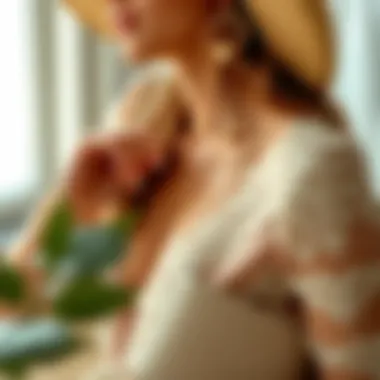
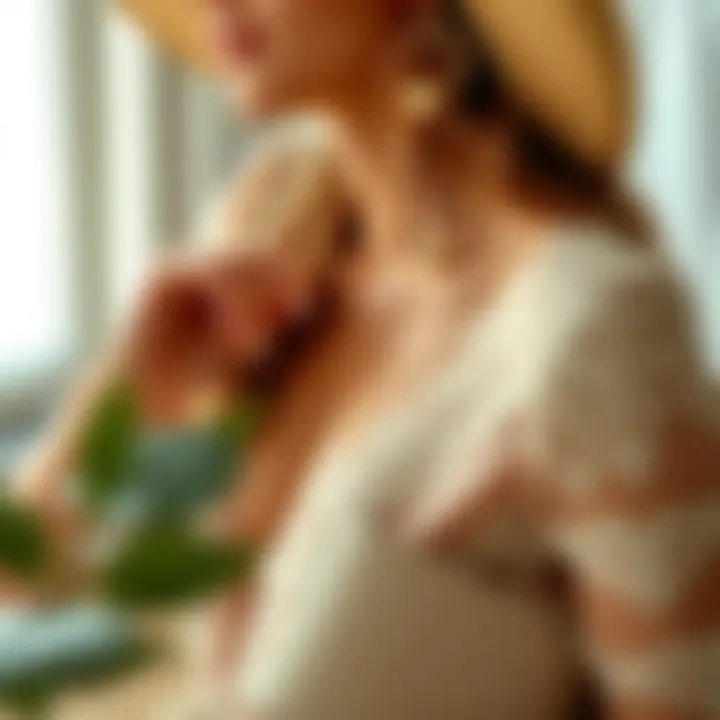
Accessorizing can take a lace outfit from good to great. The right accessories enhance, elevate, and even redefine the overall look. This section will delve into the choices available that can either complement or sharply contrast with lace, depending on the desired effect.
Jewelry Choices
When selecting jewelry to accompany lace, simplicity often reigns supreme. A delicate pendant or subtle hoop earrings work wonders without competing for attention. The key characteristic of this choice lies in its understated elegance that enriches the delicate beauty of lace.
A unique feature here is the option of layering simple pieces. For instance, dainty necklaces layered at various lengths can create an ethereal look that celebrates the lace while not overpowering it. However, one must tread carefully; too many accessories can clutter an outfit that is meant to convey grace and sophistication. Thus, moderation is the name of the game.
Shoes and Bags
The choice of shoes and bags is equally crucial when completing a lace ensemble. Opting for minimalistic designs often complements lace, allowing the fabric to shine its brightest. For instance, a pair of nude pumps or an elegant clutch can amplify the outfit without stealing the limelight.
The essence of this technique is that shoes and bags should reflect personal style while enhancing the whole appearance. The unique feature is the adaptability; the right choice can transition a daytime look into evening perfection. One must, however, ensure the footwear is comfortable yet stylish, as aesthetics shouldn't compromise wearability.
Caring for Lace Garments
Caring for lace garments is not just a chore, it's an essential part of preserving the beauty and integrity of these delicate pieces. Lace, with its intricate designs and vulnerable nature, requires specific attention to maintain its charm and durability. When you invest in lace, especially for sexy fashion, you want it to stand the test of time and continue to make a statement. This section provides essential insights into proper maintenance that every owner of lace fashion should be aware of.
Taking care of lace not only enhances its longevity but also ensures it retains its exquisite appearance, highlighting the sensuality that lace is known for. Several factors come into play when it comes to caring for lace clothing, from washing techniques to how you store them away.
Washing and Drying Tips
Washing lace garments can be a tricky task, but it doesn't have to be. Here are some tips to make the process smoother:
- Hands Off Approach: Whenever possible, hand wash your lace. Fill a basin with lukewarm water and add a gentle detergent. Agitate the water with your hands to mix the detergent and create a soapy solution.
- Submerge Gently: Place the lace piece in the soapy water, giving it a gentle swirl. Let it soak for about ten minutes. Avoid scrubbing or twisting, as this could ruin the delicate fibers.
- Rinsing: After soaking, rinse the garment under lukewarm water until the soap is completely gone. You may need to repeat this step a few times to get rid of all the residues.
- Drying: When it comes to drying lace, avoid wringing it out. Instead, lay it flat on a clean, dry towel and roll the towel to absorb excess water. Unroll it and then lay it flat to dry in a shaded area. Direct sunlight can cause the colors of the lace to fade.
Following these steps can keep your lace looking fresh and vibrant, much like the day you bought it.
Storing Lace Properly
Proper storage plays a crucial role in maintaining your lace garments. Here are a few tips:
- Avoid Hangers: Lace should not be hung on hangers as it can stretch out and lose its shape. Instead, fold the garment carefully and store it in a drawer or a box.
- Use Acid-Free Tissue Paper: When folding lace, use acid-free tissue paper between layers to protect it from creases and snags. This not only helps keep the shape but also prevents discoloration.
- Climate Control: Store lace pieces in a cool, dry place. Excessive heat and humidity can damage the fabric, leading to mold or degradation. A cotton storage bag might also be a good option to keep dust away while allowing the fabric to breathe.
- Regular Checks: Take time to check your stored lace periodically. This way, if any issues arise, you can address them before they worsen.
By following these storage tips, you can ensure that your lace garments remain as mesmerizing as the day they were crafted, ready to be showcased whenever the occasion arises.
"Caring for your lace garments is like nurturing a fine wine; the better you treat it, the more exquisite its essence becomes."
The Future of Lace in Fashion
Exploring the potential future of lace in fashion isn’t just an exercise in imagination; it’s a necessary conversation for designers, retailers, and trendsetters who want to remain relevant in a continuously evolving industry. Lace has been a staple in women's wardrobes for centuries, and as we move forward, the interplay between technology, sustainability, and innovative designs will be crucial in shaping its place in fashion. This section will highlight two critical aspects: sustainable innovations in lace production and the continued evolution of lace designs.
Sustainable Innovations in Lace Production
As concerns about ecological impact rise, the fashion industry is under increasing pressure to adopt more sustainable practices. Lace production is no exception. In recent years, many brands have begun to explore eco-friendly materials and processes, paving the way for a greener future.
- Biodegradable Fabrics: Manufacturers are now experimenting with biodegradable materials, moving away from traditional synthetic fibers that can linger in landfills for decades. Fabrics like organic cotton lace or silk are gaining traction.
- Recycled Materials: Some innovative designers are incorporating recycled fibers into lace production, reducing waste and creating unique textures.
- Local Production: The shift towards local sourcing not only minimizes carbon footprints but also supports traditional craftsmanship, ensuring the lace’s cultural significance is preserved.
These sustainable innovations aren’t just beneficial for the environment—they also resonate with consumers increasingly interested in ethical fashion choices. This blend of style and eco-consciousness offers a fresh take on the allure of lace, appealing to a new generation of fashion enthusiasts who value both aesthetics and ethics.
The Continued Evolution of Lace Designs
The journey of lace design is anything but static. Instead, it adapts to the whims of culture, technology, and consumer preference. Today, we see an intriguing mix of traditional craftsmanship and modern techniques influencing lace design, leading us to speculate about its future.
- Technological Integration: The rise of 3D printing and digital textile design is opening doors for unprecedented creativity in lace patterns. Designers now have the freedom to explore intricate designs that were once impossible to achieve by hand.
- Diverse Styles: The fusion of various cultural influences is enriching lace aesthetics. Designers are drawing inspiration from global traditions, creating hybrid styles that incorporate techniques and motifs from different cultures.
- Inclusivity: As fashion becomes more inclusive, lace designs are also broadening to cater to various body types and sizes. The idea is not just about making lace accessible but also ensuring it enhances every individual's natural beauty.

